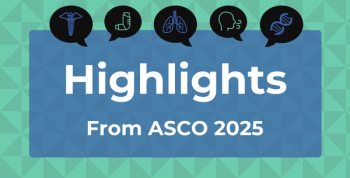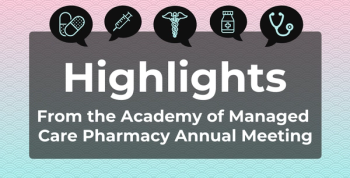
Navigators Offer Touch Points on Patients' Cancer Journey
The evolution of the navigator role has been an important development in cancer care, according to panelists who offered various perspectives on helping patients along the cancer journey.
For all the innovations in cancer therapy and diagnostic tools, one of the most profound advances in care may be the helping hand: the role of the nurse navigator continues to evolve, and evidence shows giving patients this source of support works.
Different aspects of the navigator and support roles were the topic of a panel on the second day of Patient-Centered Oncology Care®, the multistakeholder gathering in cancer care held in Philadelphia, Pennsylvania.
The insurer Aetna is incorporating nurse navigators throughout cancer care due to the “vital impact” these professionals have on patients, said Roger Brito, DO, senior medical director of Oncology Solutions at the payer. Navigators wear multiple hats and reach out immediately after the biopsy—they don’t wait for the results to come back, he said. The biopsy itself is “an anxiety provoking procedure," Brito said.
“They follow our members through their cancer journey by getting them into the right treatment plan” he said. Our philosophy is, “You don’t join us, we join you.”
Bo Gamble, director of Strategic Practice Initiatives for the Community Oncology Alliance, has seen the evolution of the navigator’s role, especially over the last 5 years. “I’ve really seen it take hold,” Gamble said, saying that the presence of navigators affects not only the quality of care for patients but also affects physician recruitment.
Navigators have communication skills, particularly as mediators between providers and a patient’s employer, that physicians lack. “They have a magic touch,” Gamble said, and are so needed that the challenge now is freeing up time for professional development.
As an oncology financial navigator for St. Agnes Cancer Institute in Ellicott City, Maryland, Nicole Taglione connects with nurse navigators at the beginning of a patient’s treatment to figure out what insurance will pay and whether there is potential need for assistance from private foundations or the drug manufacturers. “We help the patient to understand what to expect before they get the bills,” she said.
Kelly Pressler, RN, MSN, OCN, and Karon Martyn MSN, ANP-BC, AOCNP, both of Jefferson-Abington, a hospital north of Philadelphia, discussed the sequence of their roles in a patient’s care. Pressler serves at the initial point of contact and emphasized how important that is for setting the tone for the rest of the patient’s experience.
“That first touch point is so very important for the patient,” Pressler said. It’s essential to communicate a sense to the patient that “I’m safe, I’m comfortable with the decision I make after this phone call.”
When Pressler transitions a patient to Martyn’s care, the process is very careful and deliberate. Martyn knows the patient is headed her way, and Martyn assists in a shared decision-making process that she says is far cry from the “1950s” model of care where physicians did little to inquire what patients wanted.
“We make sure that treatment decisions are best for them,” Martyn said, and she makes sure patients understand that things can change.
Moderator Margaret O’Grady RN, MSN, OCN, FAAMA, the administrative director for Jefferson Abington’s Oncology Service Line, asked the panel to discuss how they address acute episodes as well as the topic of palliative care—a challenging but necessary step.
Brito said the more that Aetna does to increase the “stickiness” of the relationship between the navigator and the patient, the more likely they are to prevent issues of toxicity of medication from turning into a trip to the emergency department. The growing emphasis on survivorship care—and the rising number of survivors—extends the length of these relationships.
Pressler was more direct. “The first thing is, you have to be nosy.” Nurses in the infusion room, for example, have to be trained to ask the patients about side effects. When patients say nothing is wrong, nurses have to be willing to dig a little deeper. Developing that rapor will allow patients to open up and share things before they turn into big problems, as well as make the appointment with the physician more efficient.
Gamble agreed. His organization has done extensive surveys with patients about their experiences and learned, for example, that sometimes the stress level within families is so high that a patient’s workplace is the only refuge. Again, he said, the navigators seem better equipped at finding out these things. “They’ve become the heroes in this generation.”
Newsletter
Stay ahead of policy, cost, and value—subscribe to AJMC for expert insights at the intersection of clinical care and health economics.







































